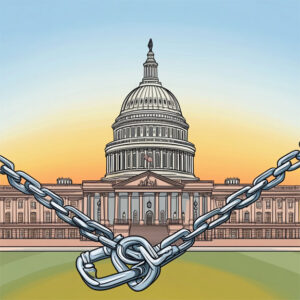 Ever since Trump won his first term in office, I have wondered why people support him. I am not going make a straw man his supporters and say they are all stupid, racist, or opportunists. Rather, I want to consider reasons why people back Trump.
Ever since Trump won his first term in office, I have wondered why people support him. I am not going make a straw man his supporters and say they are all stupid, racist, or opportunists. Rather, I want to consider reasons why people back Trump.
To start with the most obvious, some agree with his actions and policies, and it is rational that they support him. There is no mystery here other than why they agree with him.
There are some who are dismayed about what he says and wish he would show more restraint. While they dislike some of his word choices, they largely agree with his policies and actions. This is certainly rational. If their only concern about him is that he sometimes gets salty or a bit rough, it makes sense they support him.
There are even some supporters who worry about some of his policies and actions but go along with him anyway. In many cases, their motivations seem pragmatic: they get something from Trump or would pay a high price for not supporting him. For example, a Republican politician might get taken out in a primary if they earned Trump’s ire. As another example, a wealthy person might loath Trump yet like the tax breaks and de-regulation that increase their wealth. This involves setting aside certain values for others, but this can be rational. We all must make judgments in which values are in conflict, so a Trump supporter backing him despite their dislike makes sense. Trump supporters also try to convince others to support Trump.
When people criticize of Trump, his supporters often defend him by making economic arguments. For example, Trump supporters have told me that because of him the stock market does well, and this is good for my retirement income. So, I should stop criticizing Trump. When the stock market does badly, they place the blame elsewhere and say that Trump will fix it soon. As another example, his supporters also respond to criticism about Trump’s racism with by arguing minorities ought to support Trump (or at least shut up) because under his leadership they will be better off . These arguments are based on the principle most eloquently put by James Carville’s “the economy, stupid.” While Carville originally presented this to Clinton campaigners, it is now used broadly to claim that what matters the most is the economy.
From a factual standpoint, this claim has merit: people often say that they vote based on economic concerns. In the 2024 election, Trump supporters posted about inflation, egg prices and the cost of gas as reasons to support Trump. But is the argument that people should support Trump for economic reasons a good one?
From a factual standpoint, there are obvious problems with the premise of this argument. First, Trump (as predicted) failed to deliver on his promises about the cost of eggs and inflation. The stock market has also been a bit erratic.
Second, the economy has been good for the wealthy and not so good for everyone else. While this gives billionaires an excellent reason to support Trump, it does not give the rest of us an economic reason to do so. Third, the influence of the president on the economy is often exaggerated. In good times, supporters of the president give him the credit, in bad time his opponents assign him the blame. Trump failed to deliver on egg prices and inflation, but much of this is beyond Trump’s control. While his gets him off the hook to a degree, it also undercuts the argument that people should support Trump because of the economy.
Trump most devoted supporters will dispute these claims and assert that the economy is either great or will soon be great. Let these claims be granted for the sake of argument. The Trump supporter version of the argument would be:
Premise 1: The economy is great.
Premise 2: This is because of Trump.
Conclusion: You should support Trump (or at least stop criticizing him).
This argument is used to convince people who oppose to support or at least stop criticizing him. I oppose many of Trump’s policies and actions. These include his racist immigration policies, his approach to Ukraine, DOGE, his tax cuts, his putting incompetent grifters into positions of power and so on. While Trump’s supporters would dispute my views, their economic argument is that I should set aside my moral concerns because of his (alleged) success with the economy This argument is an old one and connects to America’s original sin.
Some of the slave-owning founders recognized that slavery was morally wrong or at least expressed this view in their more philosophical writings. Yet, they allowed it to continue for pragmatic reasons: profit and political support. Those who supported them but who also had moral concerns about slavery were swayed by similar reasons: slavery was crucial to the economy. People looked away, morally speaking, because they wanted to get paid. This approach has persisted: people who have moral qualms often set them aside for economic reasons and are often persuaded to do so.
I am not saying that supporting Trump is the moral equivalent of supporting slavery. Rather, my point is that an original sin of America is putting economics over ethics. What Trump supporters are now asking me to do is analogous, albeit not as bad: they want me to set aside my moral concerns about Trump because of his alleged economic success. That is, I should look away because I am getting paid. They are not amused when I ask if this means that they will turn against Trump when the economy goes bad.
One could try to make a utilitarian case by arguing that the harm he causes is outweighed by the good of the economic benefits of his presidency. But even if it is (wrongly) assumed that Trump is significantly responsible for the positive aspects of the economy it is not plausible to claim that most of his morally problematic actions and policies have anything to do with the economy. For example, his racist immigration policies will hurt the economy if fully acted upon. If Trump did have to do morally problematic things to make the economy better, then one could make the utilitarian argument to justify these actions. But the economy cannot justify evil actions and policies that do not impact the economy. Using an analogy, one could imagine a spouse who does questionable things to make money for their family. These could be, perhaps, justified on utilitarian grounds. But this would not justify wrongdoing on their part that had nothing to do with making money. So, if dad must do some shady business to pay for Timmy’s cancer treatment, then that could be justified. But the fact that he makes money would not, for example, justify dad committing adultery, beating Timmy, or vandalizing the local mosque and synagogue. Likewise, for Trump, whatever he might do to (allegedly) improve the economy might be justified on utilitarian grounds. But this does not warrant his other misdeeds. Those who believe he is a bad person doing bad things should not be swayed by an appeal to money; they should not look away just because they want to get paid.

 As a political tool, members of congress threaten or engage in a government shutdown. When the government is shut down, federal workers can be furloughed and sent home without pay and forbidden from working. Others, like TSA agents, can be compelled to work without pay. As the government shutdown does not shut down bills and expenses, the unpaid workers will be harmed by their lack of income. While some federal workers are well paid, many live from paycheck to paycheck and have few financial reserves. Because of this, some federal workers have turned to food banks during past shutdowns. In addition to the impact on workers, there are indirect impacts on those providing goods and services. After all, people who are not getting paid will be spending less.
As a political tool, members of congress threaten or engage in a government shutdown. When the government is shut down, federal workers can be furloughed and sent home without pay and forbidden from working. Others, like TSA agents, can be compelled to work without pay. As the government shutdown does not shut down bills and expenses, the unpaid workers will be harmed by their lack of income. While some federal workers are well paid, many live from paycheck to paycheck and have few financial reserves. Because of this, some federal workers have turned to food banks during past shutdowns. In addition to the impact on workers, there are indirect impacts on those providing goods and services. After all, people who are not getting paid will be spending less. The denotation of a word is what it literally means. The connotation is the emotional loading of the word, which can be negative or positive; this is how the word makes you feel. To illustrate, “swarm” and “infestation” have strong negative connotations. Whether the connotation is negative or positive depends on various factors, such as how the audience feels about the word. For example, the connotation of “socialism” is negative for most Americans but obviously positive to socialists. Two words can have the same denotation, but very different connotations. For example, the slang “pig” and the word “police” have the same denotation, but different connotations. As would be expected, rhetoric uses the influence of connotation to affect how people feel.
The denotation of a word is what it literally means. The connotation is the emotional loading of the word, which can be negative or positive; this is how the word makes you feel. To illustrate, “swarm” and “infestation” have strong negative connotations. Whether the connotation is negative or positive depends on various factors, such as how the audience feels about the word. For example, the connotation of “socialism” is negative for most Americans but obviously positive to socialists. Two words can have the same denotation, but very different connotations. For example, the slang “pig” and the word “police” have the same denotation, but different connotations. As would be expected, rhetoric uses the influence of connotation to affect how people feel. During Trump’s first term the United States
During Trump’s first term the United States  While the term “fascism” has been around since before WWII, its use has surged in recent years and is used across the American political spectrum. Both Bush and Obama were called fascists. Trump’s detractors and supporters regularly use the term on each other. But what is fascism?
While the term “fascism” has been around since before WWII, its use has surged in recent years and is used across the American political spectrum. Both Bush and Obama were called fascists. Trump’s detractors and supporters regularly use the term on each other. But what is fascism? Since most Americans find overt racism unpalatable, racist politicians and pragmatic exploiters of racism need to avoid it. However, they want to recruit and advance their agenda, so they need to express their racism while maintaining plausible deniability. The example I will focus on involves racism and migration.
Since most Americans find overt racism unpalatable, racist politicians and pragmatic exploiters of racism need to avoid it. However, they want to recruit and advance their agenda, so they need to express their racism while maintaining plausible deniability. The example I will focus on involves racism and migration. I will begin with the obvious: charity is good and those who help others from the goodness of their hearts are good people. But behind the light of charity lies a terrible darkness. This darkness remains unseen, for attention is focused on the light.
I will begin with the obvious: charity is good and those who help others from the goodness of their hearts are good people. But behind the light of charity lies a terrible darkness. This darkness remains unseen, for attention is focused on the light. Some claim that “wokeness” (formerly “political correctness) has gone too far so that “you can’t say anything anymore.” As evidence people often offer examples of celebrities who faced some consequences for saying things that seem racist, homophobic or sexist. They also point to trigger warnings, safe spaces and when right wing speakers have been harassed or silenced.
Some claim that “wokeness” (formerly “political correctness) has gone too far so that “you can’t say anything anymore.” As evidence people often offer examples of celebrities who faced some consequences for saying things that seem racist, homophobic or sexist. They also point to trigger warnings, safe spaces and when right wing speakers have been harassed or silenced. When billionaires are criticized for their excess wealth, their defenders often point out that they are philanthropists. Bill Gates is famous for his foundation, Jeff Bezos has given millions to his charities, and the Koch brothers have spent lavishly on higher education and medical research.
When billionaires are criticized for their excess wealth, their defenders often point out that they are philanthropists. Bill Gates is famous for his foundation, Jeff Bezos has given millions to his charities, and the Koch brothers have spent lavishly on higher education and medical research. Artists often claim to have a special relationship that gives them rights over their art even after it has been sold. One example involved artist David Phillips and Fidelity. Fidelity hired Phillips to create a sculpture park and then the company wanted to make changes to it. With neither side willing to compromise, Phillips sued Fidelity alleging the changes would mutilate his work. A famous example occurred in 1958 when the owner of the mobile Pittsburgh donated it to Pennsylvania’s Allegheny County. Alexander Calder, the creator of the mobile, unsuccessfully opposed the plan to repaint the black and white mobile green and gold. In 1969 sculptor Takis (Panayotis Vassilakis) tried to remove his work from New York City’s Museum of Modern Art. He claimed he had the right to determine how his art was exhibited—even after it had been sold. A more recent example involves watches.
Artists often claim to have a special relationship that gives them rights over their art even after it has been sold. One example involved artist David Phillips and Fidelity. Fidelity hired Phillips to create a sculpture park and then the company wanted to make changes to it. With neither side willing to compromise, Phillips sued Fidelity alleging the changes would mutilate his work. A famous example occurred in 1958 when the owner of the mobile Pittsburgh donated it to Pennsylvania’s Allegheny County. Alexander Calder, the creator of the mobile, unsuccessfully opposed the plan to repaint the black and white mobile green and gold. In 1969 sculptor Takis (Panayotis Vassilakis) tried to remove his work from New York City’s Museum of Modern Art. He claimed he had the right to determine how his art was exhibited—even after it had been sold. A more recent example involves watches.